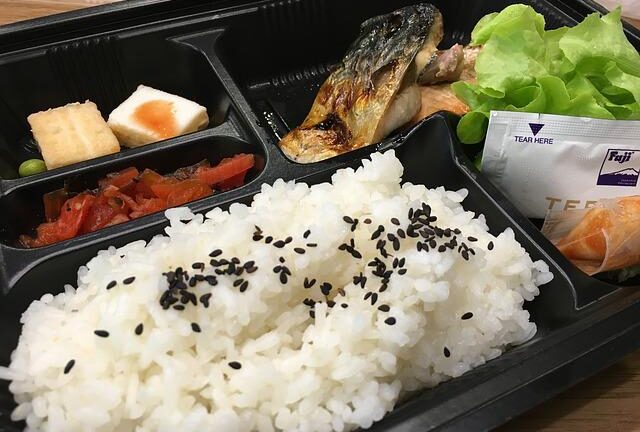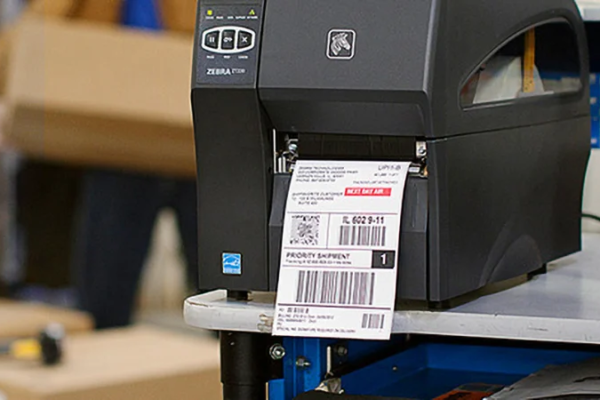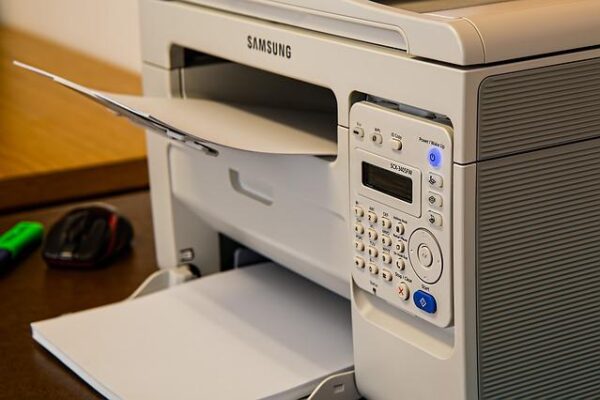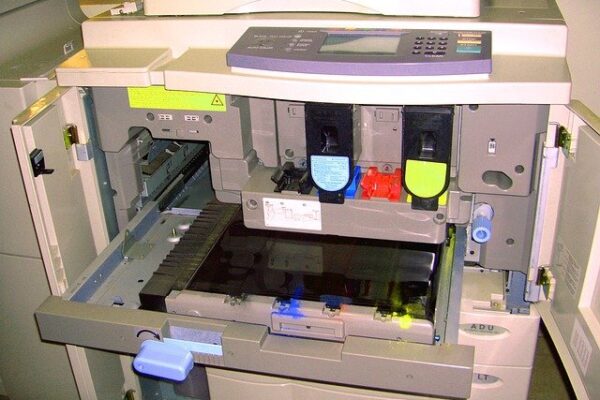What is a bento box, to begin with?
A bento box is a reusable Japanese-style lunchbox that usually holds a single portion meal made up of a main dish and a few sides. While the typical contents of traditional bento boxes are rice, fish or meat, and some vegetables, today’s bento boxes can hold any kind of food that can be transported in a box!
Did you know that the first warriors were fed on the road in bento boxes hundreds of years ago? The single-portion meal in a box containing a variety of foods has been around for centuries, but it underwent a significant evolution to get to where it is today.
For more specific information, keep reading.
What Is A Bento Box?
A single serving of a balanced meal is contained in each bento box, which is a type of all-in-one Japanese lunchbox. This dish typically includes a protein, a starch (like rice or noodles), and a variety of vegetable and fruit side dishes.
The bento box dates back to the Kamakura period in the twelfth century, when it featured dried rice and was known as simply hoshi-ii, or “dried meal.” The format was refined in the Edo period (1603–1867) when it became fashionable to tote koshi bento—bento boxes worn around the waist, containing onigiri rice balls wrapped in bamboo leaves—while traveling or sightseeing.
Modern bentos come in all different sizes and shapes: bento enthusiasts can choose from boxes made from traditional lacquered cypress wood, aluminum, or plastic, in standard oval or custom shapes. For ice packs, cutlery, chopsticks, and drinks, some bento boxes have separate compartments.
The History Of The Bento Box
The word bento was not used during the early days of the lunchbox’s conception. Starting in the Kamakura Period, around 1185, the term was actually hoshi-ii, or dried meal. It would only be made up of dried rice, without any packaging, to be consumed immediately or boiled in water. It wasn’t until 1568, during the Azuchi-Momoyama period, that wooden lacquered boxes were specially produced to create the true boxed bento that we know today.
The bento became a common meal during the Edo period, which ran from 1603 to 1867, with different ingredients and presentation styles for different social classes and occupations. Travelers and sightseers would carry koshibento (waist bento), which often included riceballs wrapped in bamboo leaves. For special events such as hanami (flower viewing parties), large, layered bentos were prepared to celebrate the occasion.
In the twentieth century, aluminum and plastic began to be used in bento preparation, paving the way for the microwavable konbini bento (convenience store bento), ekiben (train station bento) and hokaben (take-out bento).
Why Do People Use Bento Boxes?
Early in their school careers, parents in Japan frequently prepare bentos for their kids. Preparation work is frequently done the night before because it can be a tedious and intimidating task. The presentation of Japanese food has always been important, but once schools started requiring students to bring their own bento, it turned into a contest to see who could make the most artistic and complex bento. A child’s lunch often says something about their social standing and home life.
But most importantly, bentos are used to deliver the most nutrition in the smallest, most palatable package possible, and they are frequently much less expensive than eating out. Fast food bentos look less elegant, but with a price tag that is frequently under 500 yen, a bento box is unbeatable, especially for those on a tight budget.
Types Of Bento Boxes
The style, time of year, and place all play a role in defining bento in Japan.
- Ekiben: Ekiben are bentos sold in train stations, often featuring local specialties. The Meiji era (1868–1912) saw the introduction of the first train station bento, which has since become a standard for commuting.
- Hokaben: Hokaben refers to a box purchased from a take-out bento shop with hot, freshly prepared side dishes and rice. The chain that first made the idea popular gave it its name.
- Konbini: With microwaveable meal sets, these convenience store bentos are made to be simple and quick.
- Jubako: These group-oriented stackable boxes frequently feature elaborate designs. They’re used for osechi ryori, the traditional Japanese New Year dishes presented in eye-catching boxes.
- Koraku: Koraku, also known as the “picnic bento,” is designed for sharing. Koraku boxes are usually prepared for a seasonal event or festival, with dishes to fit the occasion.
- Kyaraben: “Character bentos are meals that are designed to look like characters from anime, manga, or well-known video games.
- Makunouchi: This “between-act” bento is a well-liked design with a split-panel presentation: rice on one side and side dishes on the other.
- Oekakiben: In this “picture bento,” the dishes are modeled after objects such as people, buildings, and landscapes.
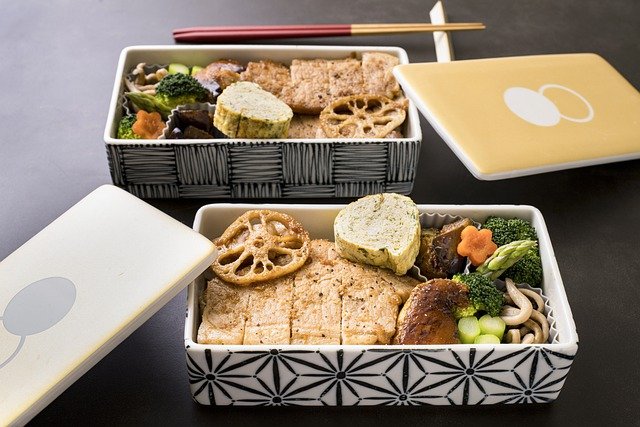
Bento Boxes: How Are They Made?
Before modern materials, bento boxes were hand-carved from wood. Craftsmen designed and lacquered them, and the more opulent the box, the more it cost. The two exquisite illustrations from the collection of the Shinjuku Historical Museum demonstrate just how opulent they can be! The tower-shaped bento on the left, which dates back a century, has fine lacquer with inlaid gold. The 19th-century gourd-shaped bento, which appears to be the ideal bento for a party in the park, houses a drinks container.
Craftsmen in the small village of Ikawa in Shizuoka prefecture, continue to produce these traditional lacquered bento, known as Ikawa mempa. Japanese cypress is formed, dried, and at least three times lacquered with a mixture of red iron dioxide and persimmon powder during a process that lasts several months. A rich, glossy bento box that is the result of the labor-intensive construction process makes your lunch feel much more opulent.
Nowadays, most of the world’s bento boxes are manufactured in the Ishikawa Prefecture of Japan. Your preferred lunch containers are produced in large quantities using molds, and unique designs are fitted to each one. . A special paint gun is used to decorate the plastic bento, and screen printing is used for more intricate patterns and images. More complex patterns and images are produced using screen printing. Sharp edges and flat or round boxes can be elegantly embossed using the stencils. To make lunch more convenient for everyone, the boxes are then individually packaged and sent throughout the world.
Whilst plastic bentos are the most commonplace, wood and bamboo boxes can provide a greener alternative for eco-conscious lunch-makers. Maruge-wappa bento boxes are made by bending thin sheets of cedar or cypress into rounded bento boxes, much like traditional lacquerware. Wappa boxes, however, keep their natural color and finish, making them perfect for a casual weekday lunch.
Ajiro, or wicker bento, are another natural alternative. Made from slivers of bamboo weaved into a basket-like shape, these whimsical bento boxes will make you feel like a protagonist in a Ghibli animation. See more about What Canon Printers Can Be Used For Sublimation
Tips For Making A Bento Box
Take into account the following advice to create your own bento-style lunchbox:
- Allow the items to cool before sealing. If you’re including warm or hot items in your bento, allow them to come to room temperature before sealing the box. Mold and bacteria can develop as a result of trapped steam.
- Consider textures. The bento’s attention to how the variety of dishes complement one another and look is part of what makes it so brilliant. Try to include crispy and crunchy elements, like senbei or fried rice balls, along with soft ones, like rice or vegetables, for a well-rounded dining experience.
- Color is important. Bento’s appearance makes it appealing in part: Place vibrant dishes next to more subdued ones to add color, or use decorative nori pieces that you’ve punched out to attach to colorful pieces of fruit and vegetables.
What Stores Sell Bento Boxes?
Purchase bento boxes online. Despite the fact that the majority of bento boxes are produced in Japan’s Ishakawa Prefecture, global trade has made it simple to get them to your door. They come in a wide variety of sizes and shapes, including stackable round or rectangular stainless steel boxes with 2 or 3 compartments, fun kid-friendly containers with snow owl, fox, and lion decals, and plastic boxes with 2 or 3 compartments. All styles and types are available at specialty stores like Karma Bento, Yiruishi Shop, Genius Villain, and Lunchbox.Sale, which also offer exquisite craftsmanship, clever designs, and whimsical shapes. While the younger set may prefer the entertaining, kid-sized ones from Bentgo or OmieBox, Sistema brand, the New Zealand-based experts on strategically divided food storage, is a good option for affordable options. Additionally, you can purchase directly from artists like Takenaka, whose calmingly zen designs are straightforward and clean.
You can use cupcake liners to keep things separate while you wait for your fancy box to arrive, or you can simply enjoy the planning process. Itadakimasu!
What Is Bento?
Bento, to put it simply, is a prepared, single-serving meal that is packed for transport by the eater. only slightly more than an American lunchbox
Traditionally, the base of a bento dish is made up of rice or noodles and one or two sources of protein, such as meat, fish, or eggs. A simple balanced meal for eating well while traveling is made up of these two main focal points, a variety of pickled and cooked vegetables, and a few bites of fruit. By including sandwiches, yogurt, dessert, green salads, and fried potatoes, modern bentos may draw inspiration from the west.
No matter what is inside the bento box, the ingredients are all carefully arranged in containers that are typically on the deeper side, more like rectangular bowls than flat plates, and satisfying to look at as well as dig into. See more about What Is A Photocopier?
What Parts Of A Bento Go Together?
Beyond aesthetics and theme, there are some guidelines to remember when assembling a proper bento meal. Not just the carb, protein, vegetable, pickled vegetable, or fruit mix, which should appear in a 4:3:2:1 ratio, should be varied for a great bento. In order to realize your creative vision, however inspiration strikes, you should buy ingredients seasonally and keep a variety of things on hand in small amounts.
In light of this, it is essential to prepare the designs and the various components in advance. To maintain the flavors and textures of each component, each should be prepared separately. Consider contrasting mild egg noodles with sweet, lightly acidic pickles, chewy rice with crinkly vegetables, and tender, savory meat and juicy fruit. Combining these kinds of sensations also increases satiety, so it’s beneficial for your health as well as your enjoyment.
Last but not least, as a general rule of thumb to help you eat that rainbow, make sure a combination of red or orange, yellow, green, white, and black appear somewhere!
The End
Since the 13th century, bento boxes have become a mainstay of Japanese culture. There are various opinions today regarding what belongs in these boxes.
Each of the compartments on these trays or boxes is designated to a particular area of the spread. They come in many different sizes, many of which are appropriate for kids.
There will be spring rolls, gyozas, dumplings, and hand rolls in a traditional Japanese bento box. The flavor is then enhanced with ginger and wasabi, and rice and salad are served as side dishes.
Best wishes.

